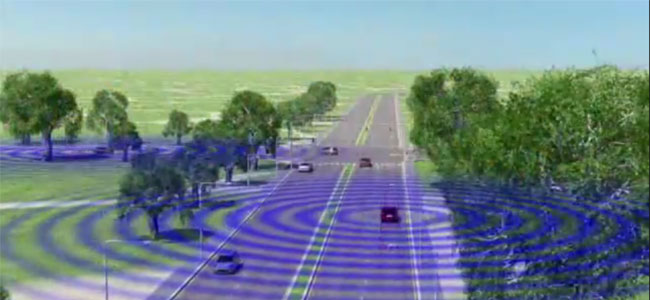
While you’re waiting for Google’s self-driving cars to arrive, or clearing the streets in terror, Ford may have just cooked up an interesting (and less potentially catastrophic) alternative: cars that talk to each other.
No, not in the KITT sense. They already have that. Ford’s intelligent vehicles actually use Wi-Fi to connect to and talk to each other, continuously swapping position data to anticipate when two hunks of metal are about to get too cozy.
When you’re about to pull into an intersection where an approach car is blowing through a red light, for example, the oncoming car would be signaling its location and speed to your car, whether you could see it or not. When you lift your foot from the brake, your car anticipates you’re about to roll into the path of the other connected car – and flicks on a light on the dash to let you know not to.
According to Ford, the system could also prevent lane changes when another car is in your blind spot, alert you when a car several cars ahead slams on its brakes, and even direct you around traffic.
Unlike radar systems that can be blocked by obstructions, talking cars can actually anticipate collisions even when the two cars in question have no sight of each other, like at awkward intersections. The big caveat: Both cars must be equipped with the technology, so while a your future Explorer might tell you when a late-model Fiesta is hiding in your blind spot, it won’t know a thing about the ’89 Camaro IROC about to barrel through the red light up ahead. The company is working with the DOT and GM, though, to ensure that production vehicles across company lines would all potentially speak the same language.


